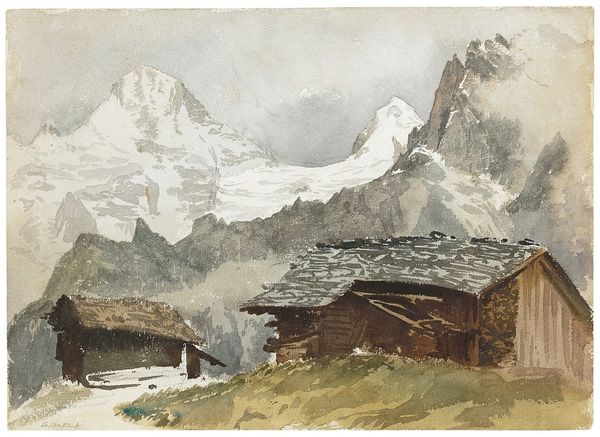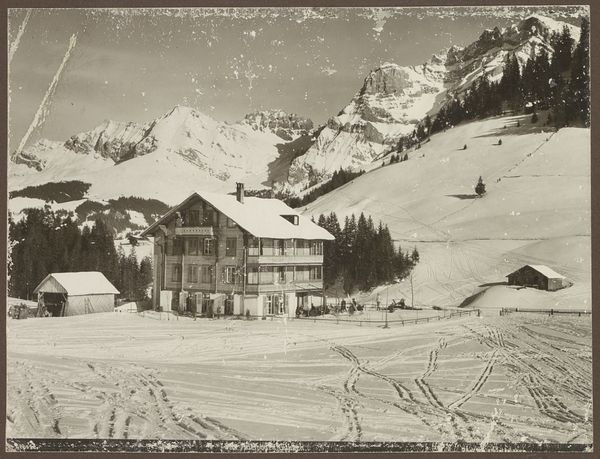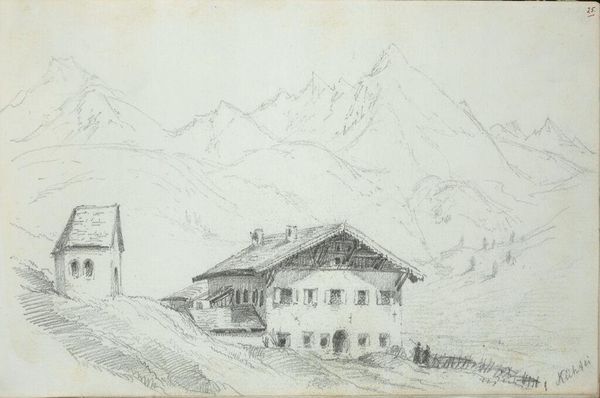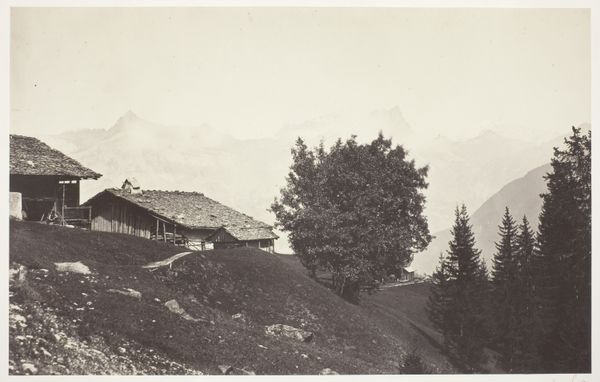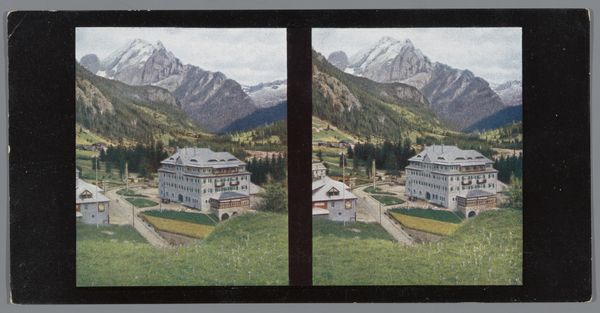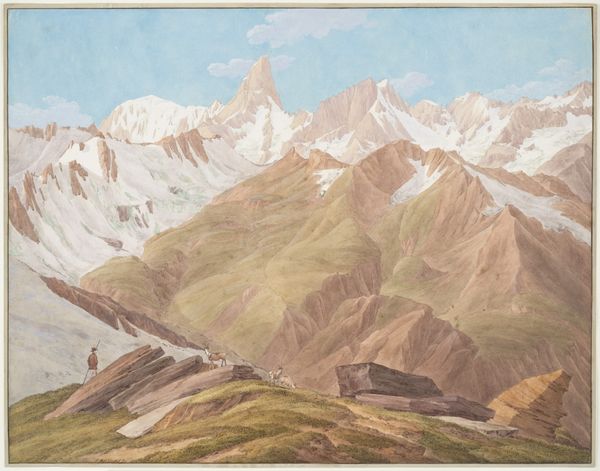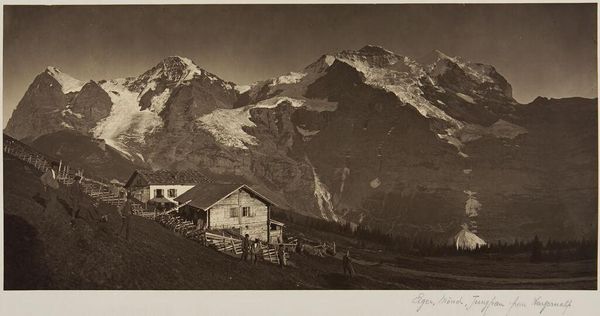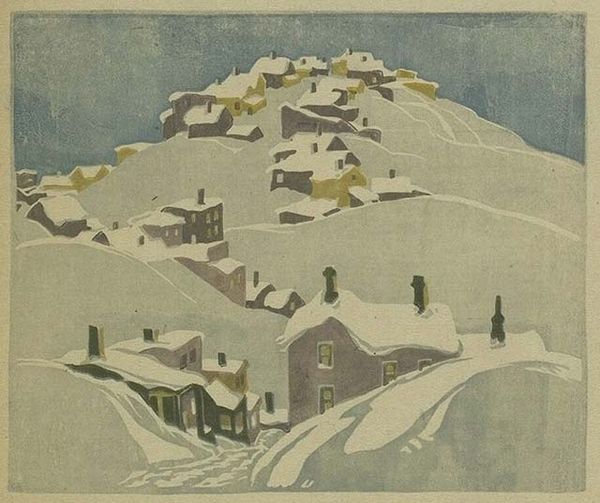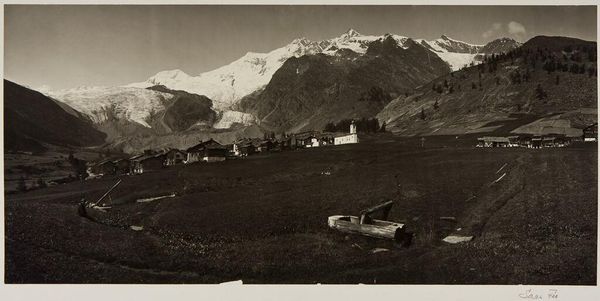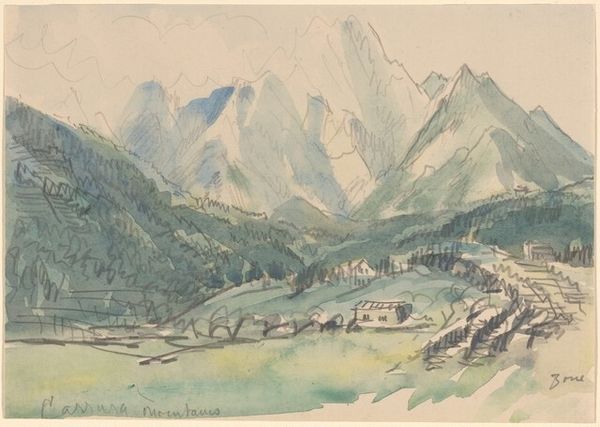
Dimensions: plate: 26.04 × 32.86 cm (10 1/4 × 12 15/16 in.) sheet: 33.97 × 40.64 cm (13 3/8 × 16 in.)
Copyright: National Gallery of Art: CC0 1.0
Curator: This is Hans Figura's "Mountain Cottage at Kitzbühel Horn, Tyrol Alps," a watercolor print estimated to have been made sometime in the 1940s or 50s. Editor: It immediately feels like a postcard, the kind of image designed for mass appeal and a simplified sense of Alpine romance. I get a sense of isolation mixed with picturesque beauty. Curator: Yes, that balance is interesting. Figura was known for plein-air landscapes like this. He captures something quintessential about the region, presenting both the grandeur of the Alps, but also the embeddedness of human life within them. Look at the careful detail he invests in the chalet. Editor: But that "embeddedness," to me, carries a loaded history. Tourism has profoundly impacted these regions and these types of idyllic scenes tend to flatten out complex political and ecological issues. It's a selective view. Curator: That's true, but also, consider what the mountain represents across cultures—as a sacred site, as a challenge, as a metaphor for ascent. I am drawn to the symbolic weight it has, almost primal in its pull. This imposing mountain backdrop almost overwhelms the cottage. Editor: Yet it’s that very contrast, between imposing nature and cozy domesticity that carries an appeal for the viewer. How is Figura framing ideas around the home? Curator: Good question. Consider the sheltering roof, laden with snow. Or perhaps the Austrian flag—a national signifier placed against that backdrop. It's as though he's making a statement about identity, about belonging to this landscape. Editor: And also perhaps laying claim, given that it’s hard to detach the artwork from its context during and after World War II. Who is claiming ownership of the Tyrol Alps at that time and to what ends? Curator: Indeed, there's a tension in it. A beauty tinged with the complexities of place and history. Editor: Exactly, this dialogue between landscape and human presence remains resonant, inviting critical reflection.
Comments
No comments
Be the first to comment and join the conversation on the ultimate creative platform.

